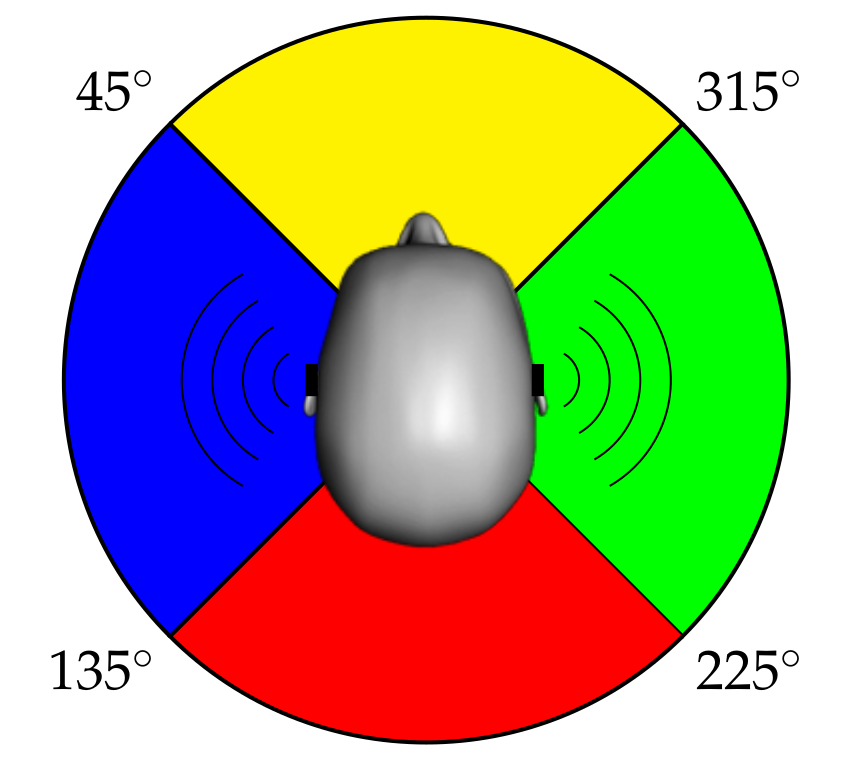
Bluetooth Low Energy based View Direction Estimation
Keywords: Digital Signal Processing, Wireless Communication
Abstract
Introduction
This semester thesis was elaborated on behalf of Phonak, a company specializing in hearing aid devices and wireless systems. Most people, who suffer from a hearing disability, are challenged when they need to listen to somebody in a noisy environment. For example on a cocktail party, where there are many other people talking as well. Phonak is approaching a new solution for this problem, to help users of hearing aids enjoy cocktail parties even more. The idea is that the ear level devices build up networks with each other and transfer the corresponding audio signals. E.g. the devices of user A record user A’s sounds and send them to the devices of user B, where the sounds are played back again. New gadgets should join and leave the networks automatically. To ensure privacy, no unnecessary devices should have access to one network. In other words only devices in a certain range and in the field of vision of the user should be allowed to join the network of her or his ear level devices.
Idea
The project is based on the nRF51822-BEACON from Nordic Semiconductor. It’s a development chip designed for Bluetooth LE applications. Each person wears two of these beacons on each side of her or his head, one to transmit and one to receive a Bluetooth LE signal. The main approach is to analyze the signal strength (RSSI value) of each transmitter at every receiver beacon. With this data, algorithms try to map the people around the user.
Results
The result of this project is a design of the head mount for the beacons, a mathematical model of a basic two people situation and an algorithm, which analyzes this situation. There are also several side products, like software code and the implementation of an inertial sensor, which help for further development. The implemented algorithm doesn’t work real time, but with prerecorded data.